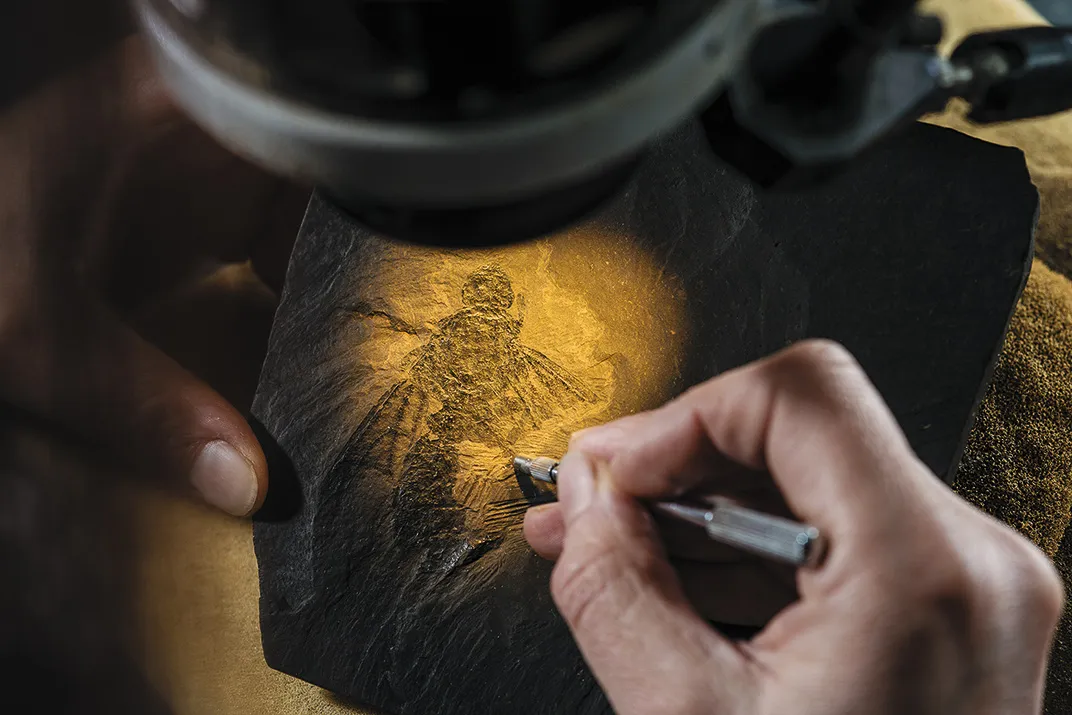The Evolutionary Secrets Within the Messel Pit
An amazing abundance of fossils in a bygone lake in Germany hints at the debt humans owe to animals that died out 48 million years ago
:focal(775x352:776x353)/https://tf-cmsv2-smithsonianmag-media.s3.amazonaws.com/filer/e6/52/e6528726-a21c-4d6e-b30e-2169ab5ae4ae/tales-pit-messel.jpg)
A gaping 200-foot-deep gouge in the forested countryside, the Messel Pit doesn’t at first glance seem worth preserving, never mind visiting, but since 1995 it has been a Unesco World Heritage site, thanks to a series of unfortunate events beginning some 48 million years ago.

The lake became a deathtrap for countless animals, and geochemistry in concert with millions of years of accumulating plant and mineral sediments would preserve features of the sunken carcasses to an astonishing degree.

A researcher working on a fossil of Titanomyrma giganteum, an ant that grew as large as a hummingbird. Berthold Steinhilber
The Eocene, from 56 million to 34 million years ago, was a crucial turning point in the history of life on Earth, a time to which we ourselves owe a considerable debt, for that’s when mammals came into their own and evolved to occupy the ecological niches vacated by the extinction of the dinosaurs.

The edges of the excavation resemble the pages of a burned book. Even today, the oil shale is mostly water. As it dries, Frey explains in German, the oil shale turns as flaky as phyllo dough and eventually crumbles to dust.

At some point around 50 million years ago, underground water came into contact with a vein of molten rock. High-pressure steam erupted, forming a crater with steep sides. As water seeped in, it created a lake shaped more like a drinking glass than a soup bowl. Any animal that fell in sank quickly to the bottom.

The lake was so deep that oxygen didn’t circulate near the bottom, which meant that there were no bottom feeders around to consume the dead and dying animals. It took 250 years to build up an inch of mud. Over millions and millions of years, plants and animals were preserved like flowers pressed between the pages of a book, and the algae and other organic matter turned into oil shale.

“They really tried everything—flying, jumping, running, tree-dwelling, ant-eating,” says Lehmann. “From the point of view of evolution, Messel is a fantastic laboratory to see what life might have given us.”

Ailuravus’ resemblance to a modern squirrel is an example of evolutionary convergence. Given enough time, adaptations may lead to nearly identical solutions—bushy tails, say, or powerful, kangaroo-like hind legs—popping up in different species. “It’s like using the same Legos to build different forms,” says Lehmann.